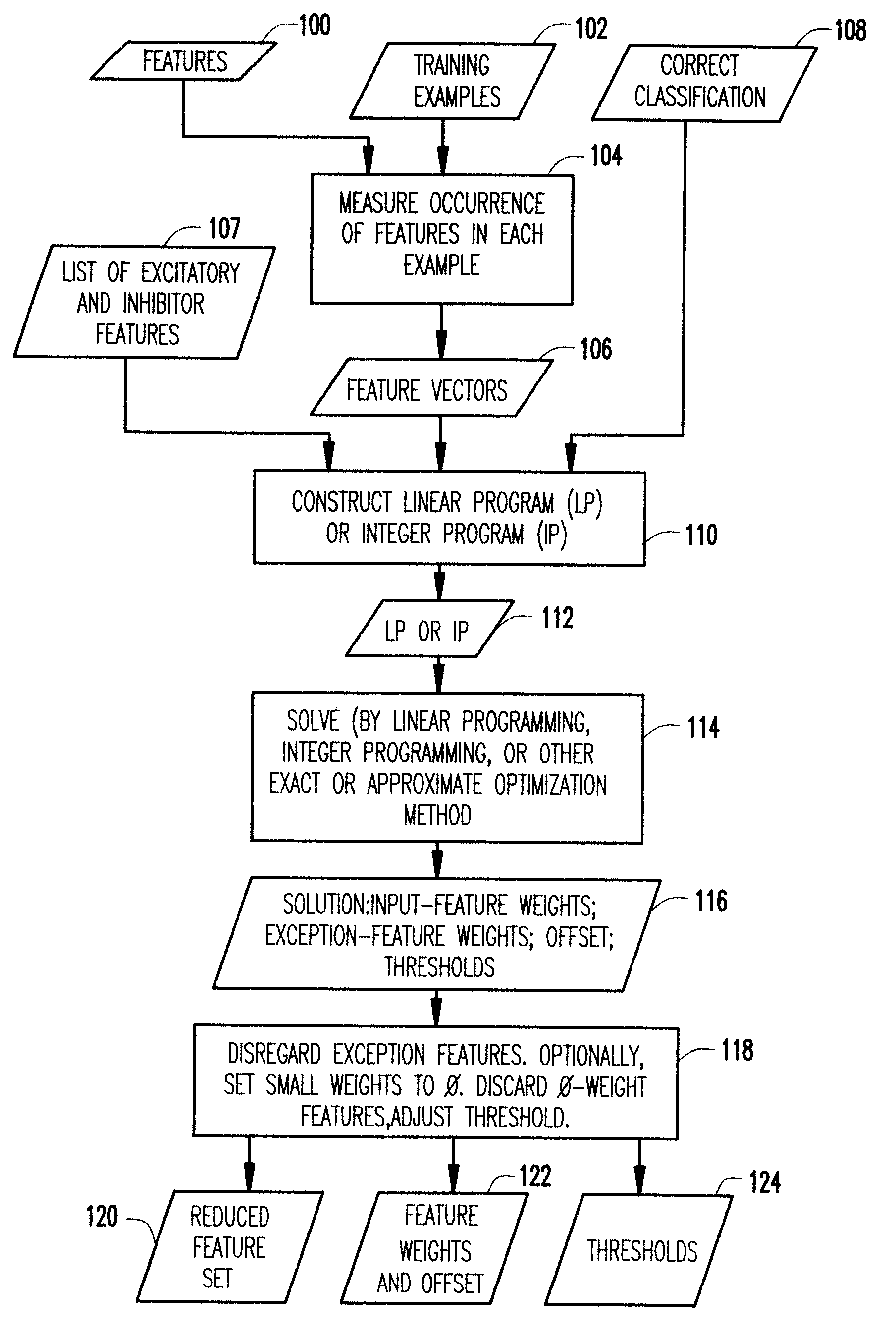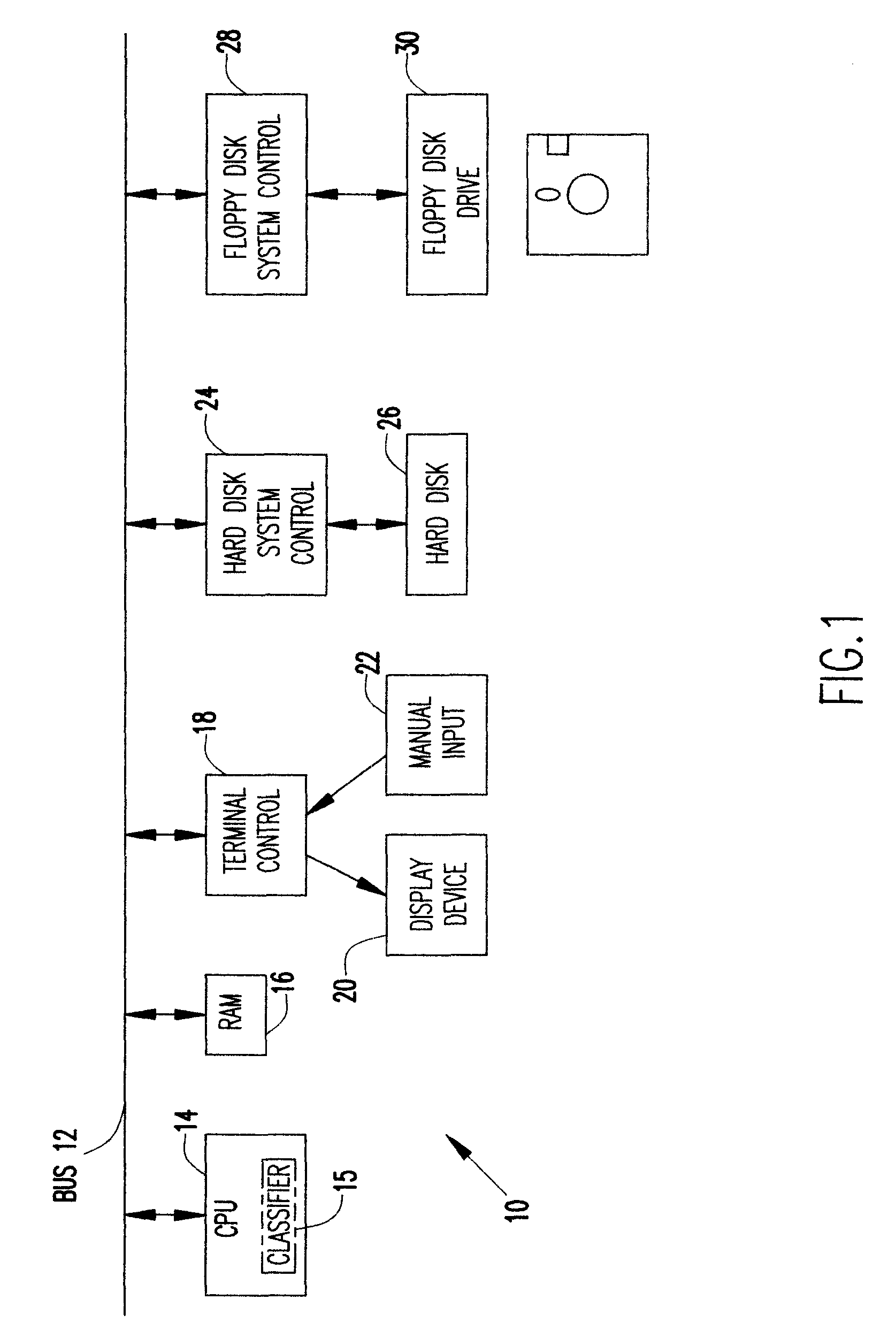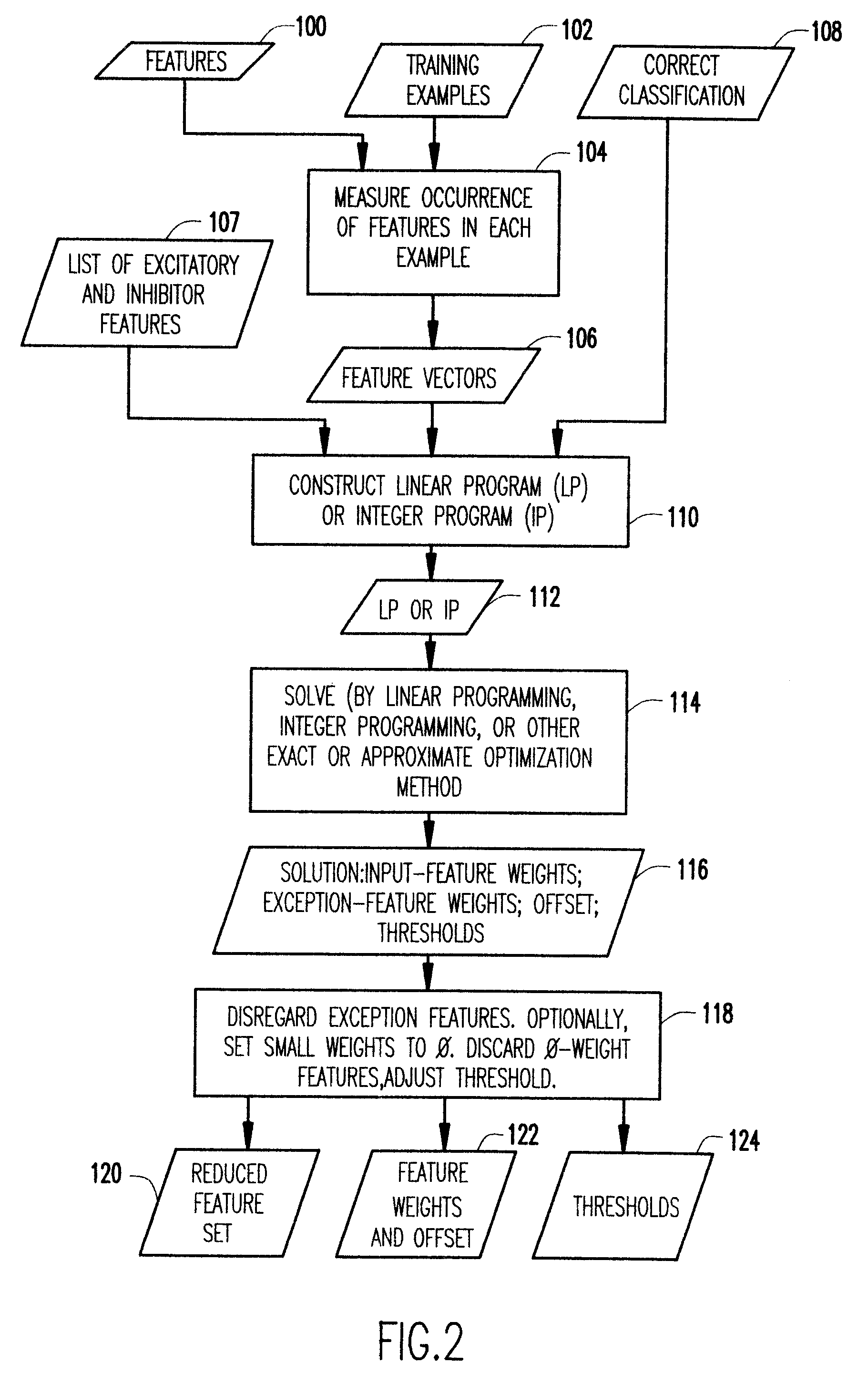Method of constructing data classifiers and classifiers constructed according to the method
a technology of data classifiers and methods, applied in the field of automatic pattern classification, can solve problems such as inability to achieve convergence, difficulty in overtraining, and slow learning
- Summary
- Abstract
- Description
- Claims
- Application Information
AI Technical Summary
Benefits of technology
Problems solved by technology
Method used
Image
Examples
example i
Each negative example i produces the constraint that: ##EQU10##
objective: The LP's objective is to minimize ##EQU11##
The output classifier is defined by the feature weights (w.sub.l, . . . w.sub.n) alone, not the "exception" values x.sub.i. Thus, if a positive example's variable x.sub.i were positive, the example will be classified correctly in the learning phase, but the output classifier's output will fall short of .alpha. by x.sub.i and may classify the example as negative; the objective function term p.sup.- x.sub.i, therefore, penalizes a "false negative" classification in proportion to the "false negative" parameter p.sup.+ and the example's shortfall, x.sub.i, from the positive classification threshold. The same is true of the "false positive" penalty parameter p.sup.-.
In the learning or training phase of FIG. 2, it is possible to correctly classify all training examples; even if only by setting every weight w.sub.j =0, setting x.sub.i =.alpha. for each positive example and, ...
PUM
 Login to View More
Login to View More Abstract
Description
Claims
Application Information
 Login to View More
Login to View More - R&D
- Intellectual Property
- Life Sciences
- Materials
- Tech Scout
- Unparalleled Data Quality
- Higher Quality Content
- 60% Fewer Hallucinations
Browse by: Latest US Patents, China's latest patents, Technical Efficacy Thesaurus, Application Domain, Technology Topic, Popular Technical Reports.
© 2025 PatSnap. All rights reserved.Legal|Privacy policy|Modern Slavery Act Transparency Statement|Sitemap|About US| Contact US: help@patsnap.com



